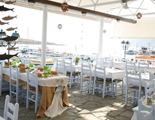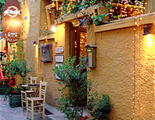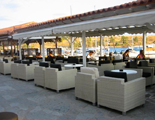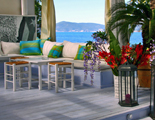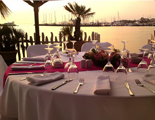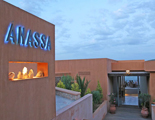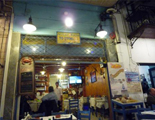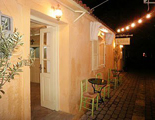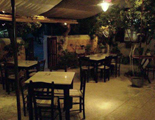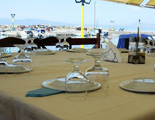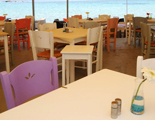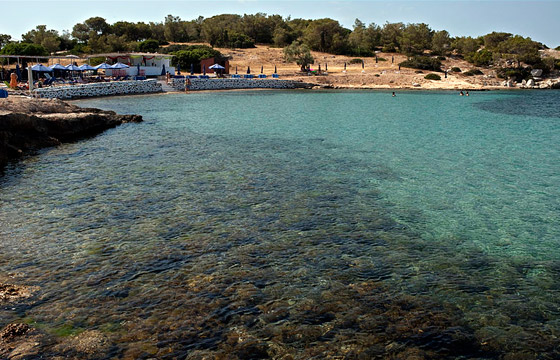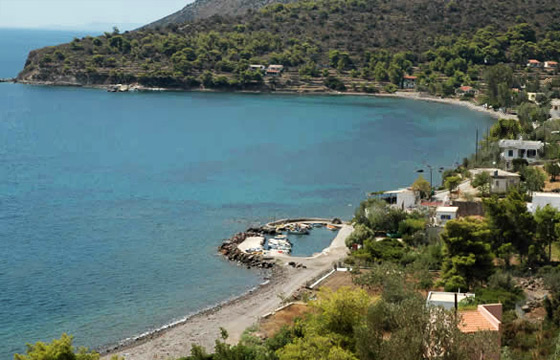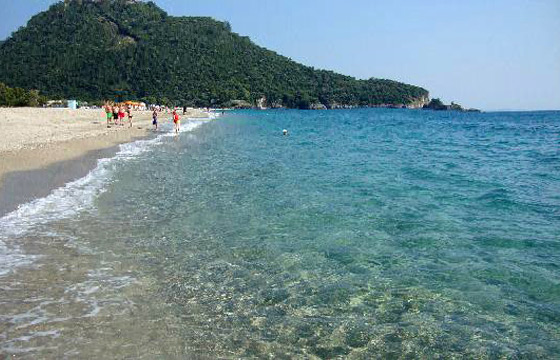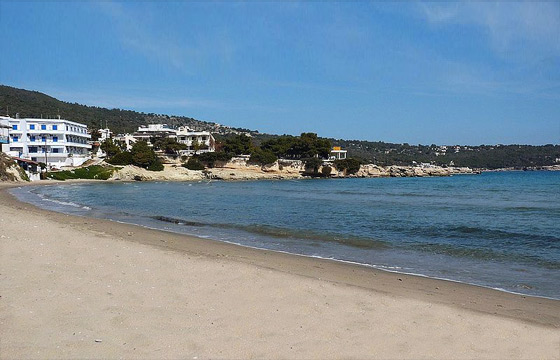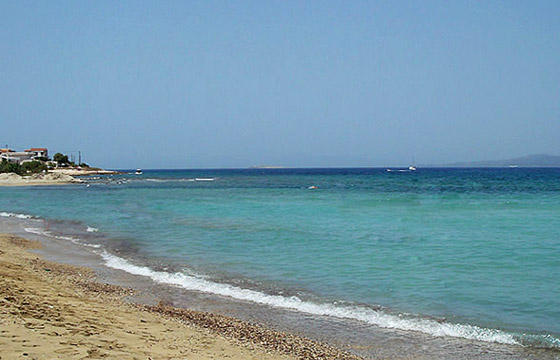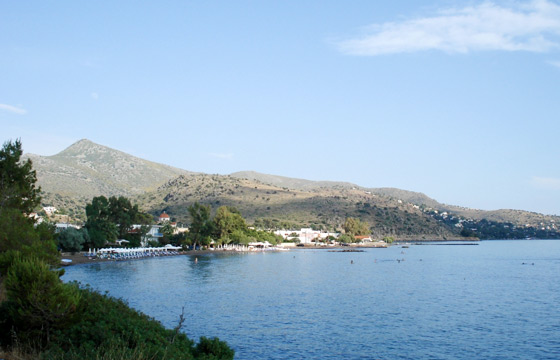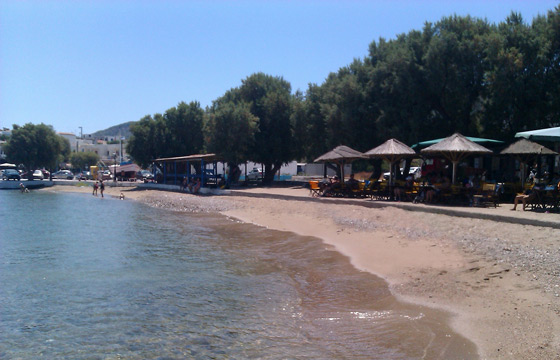 Aegina Travel Guide
Aegina Travel Guide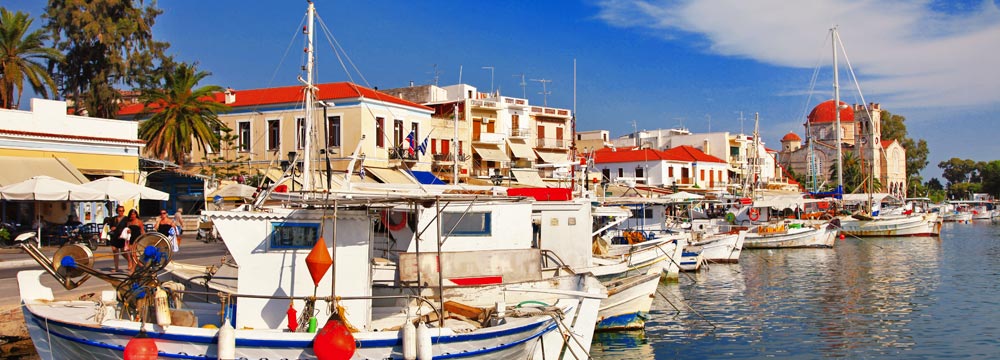
According to mythology Aegina was the daughter of the river god Asopos. She was abducted by Zeus and brought to an island close to Attica called Oenoni which later was named after Aegina.
The findings mainly in the archaeological site of Kolona indicate that the first inhabitants arrived on Aegina around 3500-3000 B.C. They came from Peloponnese and some of them settled in the area of Kolona making a living from fishing and the rest of the population settled in Mesagros occupying themselves with agriculture. The colonization of Kolona continued even for another thousand years till 2000 B.C with the inhabitants dealing with shipping and trade.
The Myrmidons from Thessaly settled on the island around 1400-1300 B.C in the area Oros were they built the temple of Ellanios Zeus and the Dorians came around 950 B.C.
Aegina along with Ermioni, Poros, Epidaurus, Prasies, Athens and Orchomenos they formed the Amfiktionia of Kalavria which started as a religion based alliance and later turned to be more of an economic and political union.
Aegina developed enough to be a shipping and trading power, hence it cut its own coin around 650 B.C. while Kolona had its own Courts and the city was well fortified with surrounding walls. It used two ports, a military one and a commercial one. Its population consisted of 40.000 free citizens and of 400.000 slaves. Around 500 B.C the island reached its peak in terms of prosperity and wealth forming a monopoly in the trade activity of the eastern Mediterranean Sea.
In 480 B.C the island took part in the battle of Salamina against the Persian fleet.
In 459 B.C Aegina allied with Korinthos, which was an enemy of Athens and the Athenians attacked the island, defeated their fleet, proceeded to the destruction of the city walls and imposed a tax to the inhabitants. The people of Aegina were forced to move to Peloponnese during the Peloponnesian War (431-404 B.C) and they were brought back to Aegina after the war ended by Lyssandros of Sparta.
After the death of Alexander the Great the island was destroyed by the fleet of the King of Pergamos and in 133 B.C it was granted to the Romans. This led to its decadence.
The population of Aegina increased after 400 A.D when many Peloponnesians found refuge from pirate raids there.
The population was forced to abandon the sea shore due to continuous pirate raids during the 6th century A.D and they built Palaiochora.
The first Venetian era lasted from 1451 to 1540. In 1537 the Turks burned the island to the ground being in war with the Venetians. The first Turkish era lasted from 1540 to 1684. Then came the second Venetian era during which the island flourished commercially and economically. From 1715 to the Greek revolution in 1821, Aegina did under Turkish domination once again.
In 1828 the city of Aegina became the first capital of the newly born Greek State with Governor Ioannis Kapodistrias. In 1829 the capital moved to Nafplio.
According to mythology, Zeus fell in love and abducted the most beautiful daughter of the river god Asopos. He took her to the island Oenone close to Attica where they had a son called Aeakos who later became the king of the island. Oenone then took the name “Aegina but had no inhabitants, so Zeus transformed the ants to humans who were called Myrmidons (in Greek the word “mirmingi” means “ant”). The Myrmidons were eventually considered to be an elite army with six hands and black armor.
Aeakos married twice and had three sons. Peleus and Telamonas with Endiida, and Fokos with the Nereid Psamanthi. Peleus and Telamonas left the island after murdering Fokos out of jealousy. Peleus settled in Thessaly, married Thetis who was immortal, and had a son called Achilles. Telamonas went to Salamina, married Erivia and had a son called Ajax. Both, Achilles and Ajax played a major role in the war of Troy which is described in Homer’s “Iliad”.
The temple was built by the people of Aegina to honour the Minoic Goddess Aphaia, daughter of Zeus and Karmi. Another version of the myth supports that the name of the daughter was Vritomartys and run away to Aegina to hide from king Minoas of Crete who madly fell in love with her. The temple and its surroundings took their final form around 490 B.C. It is built in Doric style and the pediments are made of Parian marble, representing the campaign to Troy in which Ajax and Achilles played a major part in the Greek victory.
Goddess Athena is also present in them hence the name of the temple is referred to as Aphaia Athena. The place provides a marvelous view to the Saronic Sea and it seems you can touch the city of Piraeus. You can see the temple of Poseidon on cape Sounio and the Acropolis when the atmosphere is clear enough.
The old capital of the island called Palaiochora was located on a high stony hill which offered natural protection from the pirate raids. On the same spot the ancient city of Oia existed too. On the region of Palaiochora 38 churches are preserved today which reveal the development of the city mainly during the Venetian era. On the top of the city a Venetian castle was built offering a great view to the surroundings. Unfortunately very few parts of it are saved today.
On the archaeological site of Kolona, located on left part of the port of Aegina, the acropolis of ancient Aegina was built. The name kolona (pillar) comes exactly from this last pillar saved till nowadays in the area. The place was first inhabited around 3500 B.C during the Copper Era and was protected by a wall. Today only the north wall and some ruins are saved.
Next to the archaeological site the Archaeological Museum of Aegina is built with exhibits mainly from the excavations and their findings from surrounding area.
Close to the village of Kontos and opposite Palaiochora the popular Monastery of Agia Triada (Holy Trinity) or Agios Nektarios is located. In 1940 Agios Nektarios restored an abandoned Byzantine monastery dedicated to Zoodohos Pigi and this was later renamed to Agia Triada. The restoration was completed in 1907 and the church of Agia Triada was inaugurated in June 2nd 1908. There is also a church dedicated to Agios Nektarios and a small one nearby where the saint’s grave lies.
On the south western part of the island, just 10 minutes away by boat from Perdika village, Moni Islet is found. Only during summer season the routes for the visitors to the islet are frequent as its only residents are some deer, wild goats and peacocks friendly to human presence. The islet is full of pine trees and is a heaven for hiking and explorations while the waters are deep and ideal for snorkeling and spear fishing. As for beach and tourism infrastructure there is an organized beach with cantinas were visitors may have refreshments or some snacks.
Location: Chora
CLIMATE
Aegina is the second largest island of the Saronic Gulf after Salamina and is located just 16 nautical miles south east from the port of Piraeus. Nearly the two thirds of the island have volcanic terrain. It has a Mediterranean climate with mild winters and cool summers. Almonds, olives, figs and some vines are cultivated in the northern and western side plains, but Aegina is famous for the crop of pistachio (“Aeginitika Fistikia”).
TELEPHONE
The national prefix for Greece is +30 if you are calling from abroad. All numbers in the capital Athens start with the prefix 210 and are followed by 7 digits (e.g. 210-3227400).
The Area Code for Aegina is: +30 22970.
If you wish to call abroad, you have to start by dialing the other country’s national prefix (i.e. 0049 for Germany, 0044 for England etc.) and continue with the area code and the number where you wish to call.
CURRENCY
Euro €
Euro Coins: 1 and 2 euro coins (gold and silver color), 10, 20 and 50 cents (gold color) 1, 2 and 5 cents (copper color)
1 euro = 100 cents / centimes.
Euro Bank Notes: Are available in 5, 10, 20, 50, 100, 200 and 500. It is not always easy to receive change for 200 and 500 Euro Notes.
BY BOAT
Aegina is connected with the port of Piraeus every day with frequent routes. You can travel either by ferry boats (the trip lasts about 1 hour and 15 minutes) or by flying dolphins (the trip lasts about 35 minutes).
There is also a boat connecting the port of Piraeus directly with the port of Souvala (a secondary port of Aegina) and, during the summer period, with the port of Agia Marina.
The port of Aegina is also connected with the port of Agistri Island.
Nova Ferries
For accurate timetables and ticket costs please visit: http://www.novaferries.gr
Tel.: +30 210 4126181
Hellenic Seaways
For accurate timetables and ticket costs please visit: http://www.hellenicseaways.gr
Tel.: +30 210 4117341
Aegean Flying Dolphins
For accurate timetables and ticket costs please visit: http://www.aegeanflyingdolphins.gr
Tel.: +30 210 4199000
Euro Seas Ferries
For accurate timetables and ticket costs please visit: http://www.ferries.gr/euroseas/default.htm
Tel.: +30 210 4132105, +30 210 4132106
Aegina Port Authority: +30 22970 22328
Piraeus Port Authority Tel.: +030 210 4226000, 210 4147800
Routes Aegina-Piraeus
Hellenic Flying Dolphins Tel.: +30 22970 27462
Aegean Flying Dolphins Tel.: +30 22970 25800
Ferry Boats Tel.: +30 22970 25951
LOCAL BUSES
Local buses (KTEL) connect the port of Aegina with all the major villages and settlements of the island (Marathonas, Perdika, Kypseli, Vathi, Souvala, Agioi, Vagia, Agios Nektarios, Mesagros, Agia Marina).
The main bus station is located right opposite Aegina’s port.
KTEL Aegina Tel.: +30 22970 22787
TAXI SERVICE:
Taxi Aegina Tel.: +30 22970 22635
Taxi Mesagros Tel.: +30 22970 71313
Taxi Souvala Tel.: +30 6944343606
Taxi Kypseli Tel.: +30 6932328873
Taxi Agia Marina Tel.: +30 22970 32107
RENT A CAR/MOTORBIKE
Renting a car or a motorbike is, as usually, the best way to discover the beauties that Aegina has to offer. The roads, though, are mostly narrow, winding and not well maintained, so extra attention is required.
BANKS & ATMs
In the town of Aegina you can find branches of the major Greek banks.
MONEY EXCHANGE
Banks exchange all major currencies, traveler’s cheques or Eurocheques. Post offices exchange cash, but not traveler’s cheques, and usually charge lower commissions than banks. Travel agencies and larger hotels exchange cash and traveler’s cheques but usually charge a higher commission. Credit cards are accepted in shops and restaurants, however, in local cafes, especially in villages you will probably have to pay in cash.
POST OFFICE
The Greek post office is called ELTA. Post Boxes in Greece are YELLOW for normal post, usually with 2 slots for INTERNAL POST (meaning inside Greece) and post for ABROAD. RED Post Boxes are rarer and they are used for URGENT mail. REGISTERED mail is always handled and given a receipt for at the POST OFFICE.
Aegina Post Office Tel.: +30 22970 22398, Town of Aegina
POLICE STATION
Aegina Police Station Tel.: +30 22970 22100
Mesagros - Agia Marina Police Station Tel.: +30 22970 71201
MUNICIPALITY OF AEGINA
Tel.: +30 22973-20000, 22970-24444
- Tourist Police: 171, +30 22970 27777
- Hellenic National Meteorological service: +30 210 9699101-3
- Elpa (Car breakdown tourist information service): 174
- Aegina Port Authority: +30 22970 22328
- Agia Marina Port Authority: +30 22970 32358
- Souvala Port Authority: +30 22970 52188
- Piraeus Port Authority: +30 210 4226000, 210 4147800
INTERNATIONAL PRESS
International Press can be found mostly in Aegina Town.
EMERGENCY NUMBERS
Police: 100
Fire Department: 199
Ambulance: 166
HEALTH
Aegina General Hospital “Agios Dionysios” Tel.: +30 22970 24489, 29128
Aegina Health Centre M.Tzika Tel.: +30 22970 22222, 22886
Mesagros Health Centre Tel.: +30 22970 71390
Agia Marina Health Centre Tel.: +30 22970 32175
PHARMACY
You can find a pharmacy in almost every big settlement on the island. Pharmacists are well-qualified to deal with the majority of minor medical complaints or to prepare prescriptions. The opening hours are listed at the front doors or in the windows of each Pharmacy. For your convenience find below an indicative list with pharmacies:
Aegina Pharmacies Tel.: +30 22970 25594, 22970 23515, 22970 23703, 22970 52846
Souvala Pharmacy Tel.: +30 22970 52846
Kypseli Pharmacy Tel.: +30 22970 27538
Located right opposite from Perdika village, the islet of Moni is easily accessible in approximately 10’ by boat. The islet’s only inhabitants are some wild goats, peacocks and deer but you will also find two canteens for the basic supplies. The islet’s beaches offer seclusion and tranquility as they are isolated and non-organized apart form only one. The islet is ideal for hiking through its wild nature while fishing and snorkeling are also strongly suggested as its clear, transparent waters call for explorations!
Portes is the steep pebbled beach of Portes settlement with pine trees, a small port, a few houses and a tavern that complete its picturesque isolated scenery. The place is pretty quiet and it is easily accessed from Agia Marina. When descending to Portes mind the road that reaches the seafront as it is pretty narrow and only one car can pass at a time. Calmness, tranquility and seclusion are the main highlights of Portes so mind to take with you all necessary supplies.
Just 9 km south west from the port of Aegina the traditional village of Perdika is found. The settlement consists of small old houses, traditional fish taverns, bars and cafeterias. The beach is pebbled with stones and the waters are crystal clear. Some trees provide bathers with natural shade.
Close by, perched on the mountain is found a small village called Sfentouri, a very interesting settlement with two small secluded sandy beaches named Klima and Sarpa for those who enjoy relaxation and tranquility.
The beach of Agia Marina is quite large and mostly organized with sunbeds and umbrellas and two beach bars. It also offers the option for water sports while its relatively shallow waters and pine trees in the fond make it ideal for families. The coast is sandy but on its one side there is a pebbled beach ideal for snorkeling or fishing. There is also a variety of rooms to let and restaurants to choose from. A vibrant location and also a popular tourism destination on the island.
Only 4 km east from Souvala the coast road leads to a small settlement full of pine trees, called Vagia. There is a small picturesque port, rooms to let and some taverns. The beach is sandy with clear waters and it is not organized. In Vagia the excavations brought to light findings that prove that nearby there was an ancient settlement dating back to the 5th century B.C.
At about 4 km distance from Aegina town Marathonas beach is found with two charming organized sandy beaches to choose from. The place is full of trees and the waters are deep blue. In the first beach one can find taverns, bars and cafeterias, while the other one is organized with umbrellas, sunbeds and a canteen as well. Marathonas is one of the most popular tourist resorts on the island offering unobstructed views to the mesmerizing while it has managed to maintain its traditional character despite being that developed. The inhabitants occupy themselves mostly with fishing, so you will find here taverns serving fresh fish. The beach is also ideal for snorkeling and diving while you will also find diving equipment to rent.
Souvala is a small village located 10 km north from the port of Aegina with a small port directly connected to Piraeus. In Souvala you will find a nice beach with sand and pebbles, taverns, rooms to let and café-bars, most of them located on the seafront. The resort is full of life, as it gathers mostly locals, and there is also a beach with hot and cold water springs considered to be therapeutic for many skin diseases.
The octopus is cut in large pieces and boiled in the casserole with laurel, onion, olive oil and spice, tomatoes, salt and pepper. As soon as the octopus is ready it is removed from the casserole and barley shaped pasta is added in the sauce to boil with the mixture. This way, the pasta takes the unique flavour of the octopus juice, boiled with all herbs, spices and tomato.
Fish is fried in the pan with water, some olive oil, salt and oregano. When the water is evaporated, lemon juice is added on top. The fish is served with the olive oil from the pan. A different version of the typical fried fish.
The lamb or goat meat is marinated in olive oil, herbs and spices and baked for 2,5 hours in the oven. Butter, grated pistachios, broth from the roast, honey and breadcrumbs are well mixed together to prepare the crust paste. The meat is cut into portions and covered with the paste. Then it is baked for 10 more minutes until the crust is formed. If you find this traditional dish in a tavern or restaurant, just try it!
Potato flakes sautéed with water, salt, pepper, oregano, lemon juice and crushed garlic. Olive oil is added and little by little the grated pistachio, which has previously been baked, until a homogeneous mixture is formed. A distinctive and quite tasty dish.
The cuttlefish is put in the casserole and sautéed along with a glass of wine, onions, olive oil and dill. Grated tomatoes, salt, pepper and water is added and the whole mixture is cooked for 40 minutes. A delicious summery plate for lunch or dinner.
Pealed and grated aubergines are sautéed with grated onion, cheese, eggs, olive oil and parsley. The mixture is poured over the prepared dough leaves which is then folded and baked for an hour in the oven. A very special pie for the lovers of aubergines!
Aegina is worldwide famous for the plantations of pistachio trees, the island’s most traditional and quality fine product. You can find it everywhere on the island and especially in the market nearby the port of Aegina. Besides, the local pistachio cooperative is very active and promotes the cultivation, trade and promotion of the product in Greece and abroad. Pistachios are also used to make in a traditional sweet recipe with honey, forming a kind of “pasteli” that instead of sesame it contains fresh pistachios or various other sweets, e.g. spoon sweets with honey and pistachios
In the fertile northern and western side plains almond trees, olive trees, figs and some vines are cultivated, so you can find those products also in the local markets.
Since September 2009 the Pistachio Festival is organized on Aegina on a yearly basis, involving events, concerts and guided tours in sites and museums as well as food competitions. Its goals are to promote the work of local artists, the local producers, traders and the local market, reaching up to a celebration for the discovery of the city and even the entire island. For more information please visit www.aeginafistikifest.gr
On Easter Day the dance (horos) of Labri is held. A small dance used to take place in the square of Panagia Foritissa, where young men revealed their love to the girl they wanted, and a big one followed in the square of the Church of the Cross with the participation of almost all residents. In the old days the custom lasted three days per week for three weeks in a raw, starting on Thursday. Today the custom takes place on Easter Day at the Church of the Holy Cross in Palaiochora.
The end of summer and the coming of the fall are represented on the 14th of September (the day of the Holy Cross’ celebration) with the ancient custom called after Leidino. Leidino is the small meal the farmers used to have at the end of the day after work. A farmer’s image is prepared with rags and straw as a body and in the place of the head a traditional jar “wearing” a hat is painted.
The figure is put over a plain piece of wood (table, door) and various seeds are offered as well as farmer tools while the women are mourning. The “dead” is then placed on a door decorated with flowers to be buried right after. Afterwards the “body” is retrieved from the tomb and the ritual is completed with this “resurrection”.
The bride’s trousseau is shown to the groom’s relatives and friends who bedew it with rice and roses. After the wedding bed is properly prepared, the party begins with dance, singing and presents’ opening. After the wedding, the feast continues with food and traditional music till the early hours. Like in most places in Greece, the weddings are an almost all-day party with the bride and groom being its hosts and local delicacies and drinks the highlights of the day!
On the 23rd of June, the day before the celebration day of Agios Ioannis Prodromos (precursor), the custom of Klidonas takes place. A girl, whose parents are alive, is filling a jar with water and brings it back home without talking to anyone. Then boys and girls put inside the jar a personal item (ring, ear ring, etc.) and the jar is left out in the open during the night. The day after, the same people are gathered to retrieve their items one-by-one and the words they address to the one trying to find their object is supposed to be an oracle for its future. This custom used to be practiced each year in the past but nowadays it has almost been forgotten.
Usually the religious feasts are accompanied by traditional music, dancing, food and drink, offered at an open feast.
Aegina’s main religious feast is the one of Agios Nektarios, which is celebrated twice a year, the first on the 9th of November (assumption of the saint) and the second on the 3rd of September (recollection of the saint’s relics).
The sun is very intense in Greece in summer and especially in August. Try to avoid the direct exposure for extended periods of time, especially from 11.00 to 16.00 when the sun rays are on their peak.
You should be very careful when you drive a car or a motorbike because the roads usually are not well maintained and they are often narrow and winding.
You should visit the Hellenic wildlife centre which is located in the region of Metohi, only 10km away from the port of Aegina. A great number of rescued animals, especially birds, in a shelter operated mostly by volunteers and animal lovers.
Tel.: +30 22970 31338 / +30 22970 28367
Email: [email protected]
The temple of Aphaia is definitely a must-visit even for those who are not fans of archeological sites. You will be surprised by the magical view of the Saronic sea expanding in all directions and you can even see Piraeus in the background and cape Sounio on days when the atmosphere is clear.
During summer season, when the routes are frequent, visiting Moni Islet which is located right opposite the port of Perdika could be a great experience.
During your visit to Aegina, find some time to visit the picturesque settlement of Agia Marina and have a stroll to its seaside alleys. If you wish to have a swim away from crowds and love diving and snorkeling, the eastern part of the settlement, “Deksameni” is the best place to go. There you can have a nice swim in the transparent, emerald waters and they sunbathe on one of the flat, white huge rocks of the area overlooking the sea.
The small fishing village of Perdika is located near the port of Aegina (at about 20’ by car) and it consists in a picturesque sea-front settlement with whitewashed paved alleys and small taverns and cafes right on the seaside. The small port of Perdika usually hosts various yachts, sailing boats and small fishing boats. Visit Perdika before sunset and have a coffee or a drink at one of the seaside cafes gazing at the sun that dives into the horizon.
Right at the port-front street of Aegina as well as the small paved alleys behind it you will find a great number of small shops selling traditional products, pistachios, sweets and souvenirs.
In Agia Marina too you will find a great variety of small shops offering clothing, jewelry, handmade objects and souvenirs.

 Print this page
Print this page